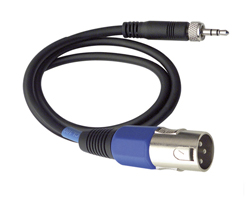
Q: Recently I was working a live show and needed to get an unbalanced signal from point A to point B. Given the noise that was induced in running the unbalanced line that distance, it was obvious we needed to balance the signal.
However, of course, we had an awfully limited kit (this was a really inconsequential and tiny show) and we didn’t have any balancing transformers available.
I’m sure there’s a way to pseudo-balance a line in an emergency, but how do you do it?
A: Nice question!
Let’s say you needed to run a signal from a keyboard to your mixer. Obviously, in your case, the unbalanced line was quite noisy, and you didn’t have the requisite balancing transformer.
What to do?
It’s not hard to make a pseudo-balanced line from the unbalanced output of the keyboard. Basically, you make the run with a standard balanced cable (TRS or XLR).
For an XLR cable, at the end where the cable plugs into the keyboard connect a precision potentiometer to pin 3 (cold, or “-”) and to ground/shield (pin 1).
On a TRS this would be between ring and sleeve. Connect pin 2 hot, or “+” as normal. On a TRS this would be the tip.
Turn the equipment on and turn up the gain on your mixer until you hear a good amount of hum and line noise coming in from the keyboard line.
Turn the potentiometer (which will change the resistance between “-” and ground) and you will hear the hum and noise level change. With some careful work you should be able to find a “sweet spot” where the hum is minimized.
If this were a permanent installation you could then measure the resistance of the pot at that setting and substitute a precision resistor in place of the pot.
What you have done is put a resistance in parallel with the output impedance of your source (in this case a keyboard) from “-” to ground that matches the “+” relationship.
Normally, on an unbalanced line, “-” would be shorted to ground, and you give up any CMRR (Common Mode Rejection Ratio) your mixer’s balanced input has.
Although not a perfect substitute in all instances, we’ve heard this make a dramatic difference in certain circumstances.
Remember, you must use precision components here, as minute changes in value will significantly effect the signal-to-noise ratio.
For more tech tips go to Sweetwater.com















